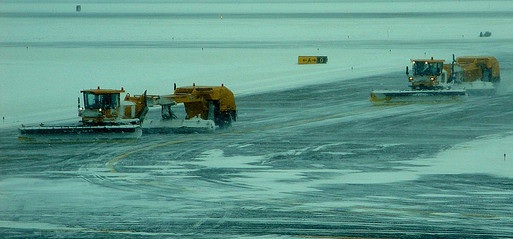Aviation needs to start planning for climate change
2 December 2014Over the past few years more and more effort has gone into reducing the impact that aviation has on the environment.
That includes us at NATS where we have a strategic goal to reduce CO2 emissions by an average of 10% per flight by 2020.
But, even if we were able to drastically cut carbon emission tomorrow, some impact from climate change is now inevitable and we need to be prepared. As an industry, aviation is used to dealing with disruptive weather events – from high winds and snow to thunderstorms – but those events are likely to become much more common in the years to come and we need to be ready.
As such, as well as developing our own plans, NATS has been contributing to a cross industry piece of work led by Eurocontrol looking at how we can improve industry wide resilience and ensure we keep our skies safe, secure and even as our climate changes.
Part of that work for us has been about developing plans and procedures to deal with heavy snow and the impact that would have on our operation. This plan was put to the test earlier than expected during the winter of 2010 when low temperatures gripped the country and brought travel disruption to millions of people.

Satellite image from the NERC Dundee Satellite Receiving Station, Dundee University.
Yet despite the disruption on the roads, rail and at some airports, NATS was able to maintain a full air traffic control service throughout the severe weather. The main challenge was ensuring that our operational employees could reach work, meaning we offered them accommodation at local hotels within walking distance of their workplace – whether that was an airport of control centre. We also used Land-Rovers to shuttle key operational staff between home and work to help ensure we always had the people we needed.
In addition, NATS maintains a network of radar stations and radio communications systems all over the country often in remote and exposed locations, all of which were kept operational during the poor weather. All our remote assets are specifically designed to operate independently of the National Grid in order to insulate them from power failures, while we also have a number of heavy duty off road vehicles to call upon to help ensure we can get to any problems as quickly as possible.
No plan is ever perfect, and I’m sure we’ll be tested again before too long, but as an industry it’s important we start planning now for what are likely to become increasingly common events.
Read our full Climate Change Resilience report.
[Header image by jronaldlee]
Comments
Please respect our commenting policy and guidelines when posting on this website.




02.12.2014
22:24
Bernie
Seriously?
08.12.2014
17:38
Setephen Balfour
A bit behind the drag-curve, Ian.